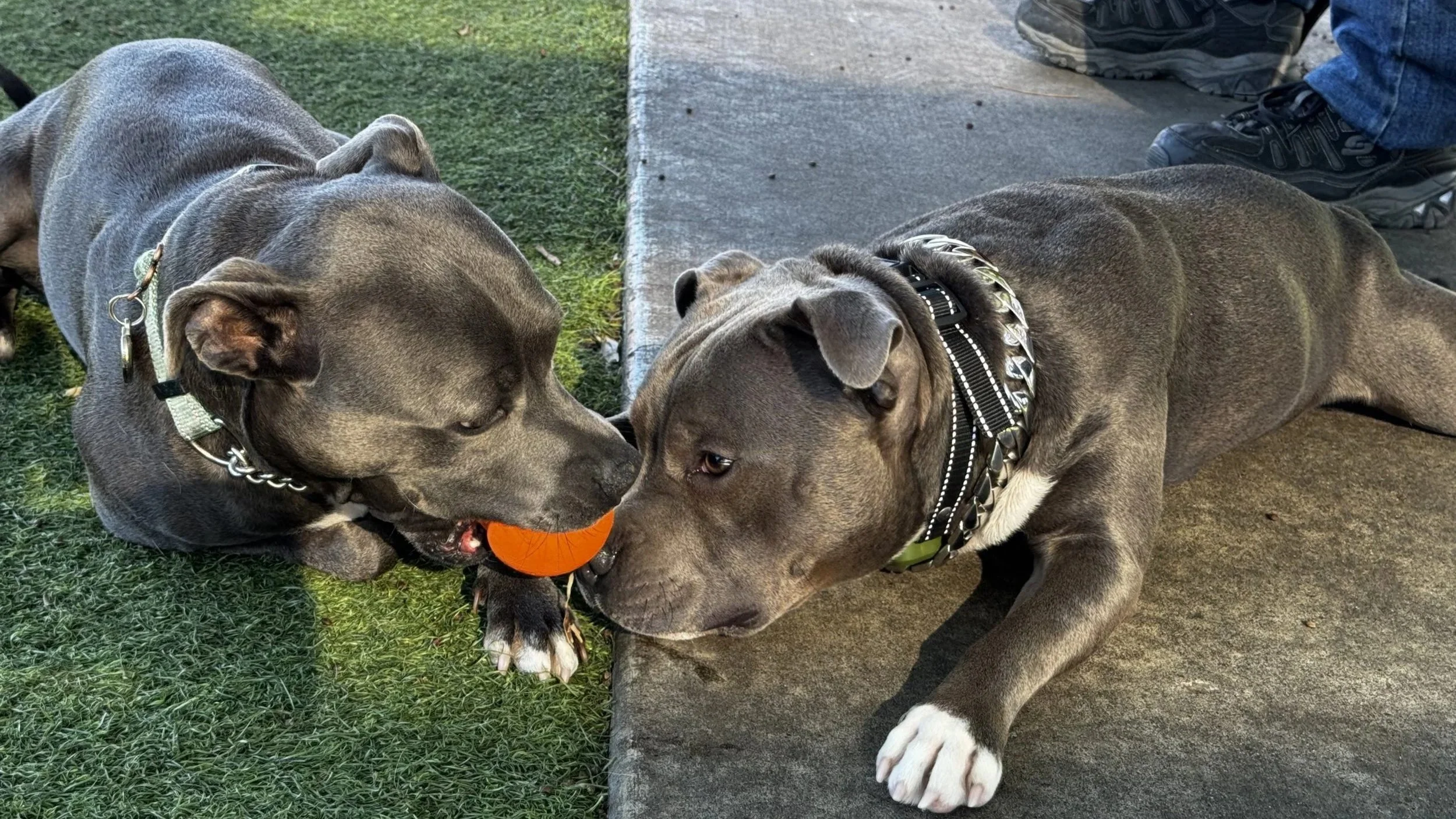Essential Guide for Bully Breeds
Bully breeds - including Staffordshire Bull Terriers, American Bullies, Pit Bulls, and related breeds - are some of the most affectionate, loyal, and intelligent dogs you’ll ever meet. Sadly, they’re also among the most misunderstood. This guide is designed to help owners cut through the myths and learn how to give their bully breed the happy, healthy life they deserve.
1. Understanding Bully Breeds
Temperament: Known as “nanny dogs” for their patience with children, bully breeds are people-oriented, affectionate, and playful. They thrive in family environments.
Misconceptions: Media portrayals often emphasize aggression, but with proper training and socialization, bully breeds are no more dangerous than other large breeds.
Suitability: Great for active families or individuals willing to commit to regular exercise and consistent training.
2. Exercise & Activity Needs
Daily Requirement: At least 60–90 minutes of physical activity per day.
Types of Exercise:
Walks (longer is better)
Tug-of-war (great bonding + energy burn)
Fetch or flirt pole play
Agility and obedience training
Mental Stimulation: Puzzle toys, scent work, and trick training help prevent boredom, which can lead to chewing or digging.
3. Training & Socialization
Start Early: Puppies should be exposed to different people, dogs, and environments as soon as it’s safe.
Positive Reinforcement: Reward good behavior with treats, praise, and play. Avoid harsh punishment, which can increase anxiety.
Consistency is Key: Everyone in the household should use the same commands and rules.
Common Challenges: Pulling on the leash, excitability around other dogs, and strong chewing habits. All manageable with training.
4. Diet & Nutrition
High-Quality Protein: Look for dog foods with real meat as the first ingredient.
Avoid Fillers: Wheat, corn, and soy often trigger allergies.
Supplements:
Omega-3s for coat health
Glucosamine/chondroitin for joint support
Probiotics for digestion
Special Considerations: Bully breeds can be prone to food sensitivities — watch for itching, ear infections, or digestive upset as possible signs.
5. Health & Common Conditions
Hip Dysplasia: Common in muscular breeds. Maintain a healthy weight and provide joint support.
Skin Allergies: Often triggered by food or environmental factors. Regular vet checks and allergy testing help.
Heart Disease: Certain bully breeds are predisposed — regular screenings are important.
Dental Issues: Strong jaws = tartar buildup risk. Brush teeth or provide dental chews.
6. Grooming & Care
Coat: Short and easy to maintain. Weekly brushing removes loose hairs and keeps coat shiny.
Bathing: Every 1–2 months (or as needed). Avoid over-bathing, which strips natural oils.
Nails: Trim monthly to prevent pain or injury.
Ears: Clean weekly to reduce risk of infection.
7. Enrichment & Lifestyle
Living Arrangements: Bully breeds thrive indoors with their family. They are not outdoor-only dogs.
Social Needs: They crave companionship — long stretches alone can lead to anxiety or destructive behavior.
Safe Spaces: Provide a crate or cozy bed where your dog feels secure.
8. Responsible Ownership
Legal Considerations: Some regions have Breed-Specific Legislation (BSL). Always check local laws.
Training Classes: Investing in obedience or Canine Good Citizen training helps reduce stigma.
Advocacy: Being a bully breed owner means being an ambassador — showing the world how loving these dogs truly are.
Bully breeds are loyal, affectionate, and eager to please. With proper care, training, and love, they are among the most rewarding companions. This guide covers the essentials, but the journey with your bully is one of ongoing learning and joy.
👉 Want to go deeper? Download our free e-book: The Complete Bully Breed Owner’s Handbook, with expanded chapters on training, nutrition, and health.
